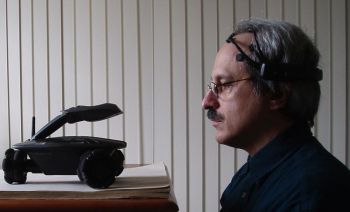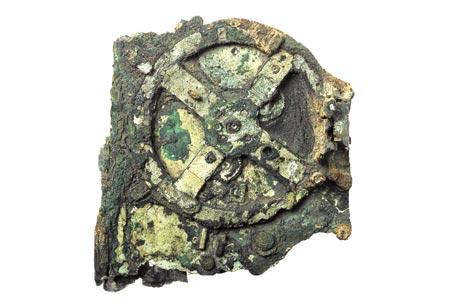
© Robert OschlerPsychic Toys: Software developer Robert Oschler looks at his WowWee Rovio robot while wearing an Emotiv EPOC headset. Using the headset, he programmed the robot to be controlled by his thoughts.
Few may remember the 1982 film,
Firefox about the Soviet fighter jet controlled by the pilot's mind. The film, starring Clint Eastwood, set out on a premise that technology using the mind as its commander would be a weapon so dangerous that "it would change the structure of our world."
Or, as software developer Robert Oschler has discovered, you can use it to watch YouTube.
Oschler is a pioneer on an emerging frontier - a place where the boundaries between man and machine are less defined, and where technological boundaries fade. Using what is known as an electroencephalogram (EEG), he has replaced a keyboard and a mouse with his own thoughts and emerging notions.
His tool of choice is a consumer EEG headset, the Emotiv EPOC. The device sports 14 electrodes that wrap around the user's head, a built-in gyroscope, and the ability to detect emotions.
His interest in the technology isn't based in monetary gain. "It's fascinating. That's what it's really about," Oschler said, adding that it "can't even be compared" to writing a Web app - both in terms of capabilities, and unrefined geek-style coolness.
"It opens up a whole new range of software that has never been possible, and a whole new way of working with computers that has never been possible before," Oschler said.
Like in the book
Do Androids Dream of Electric Sheep? that was re-imagined in the film
Blade Runner, Oschler's work has merged emotion into the computer system.

